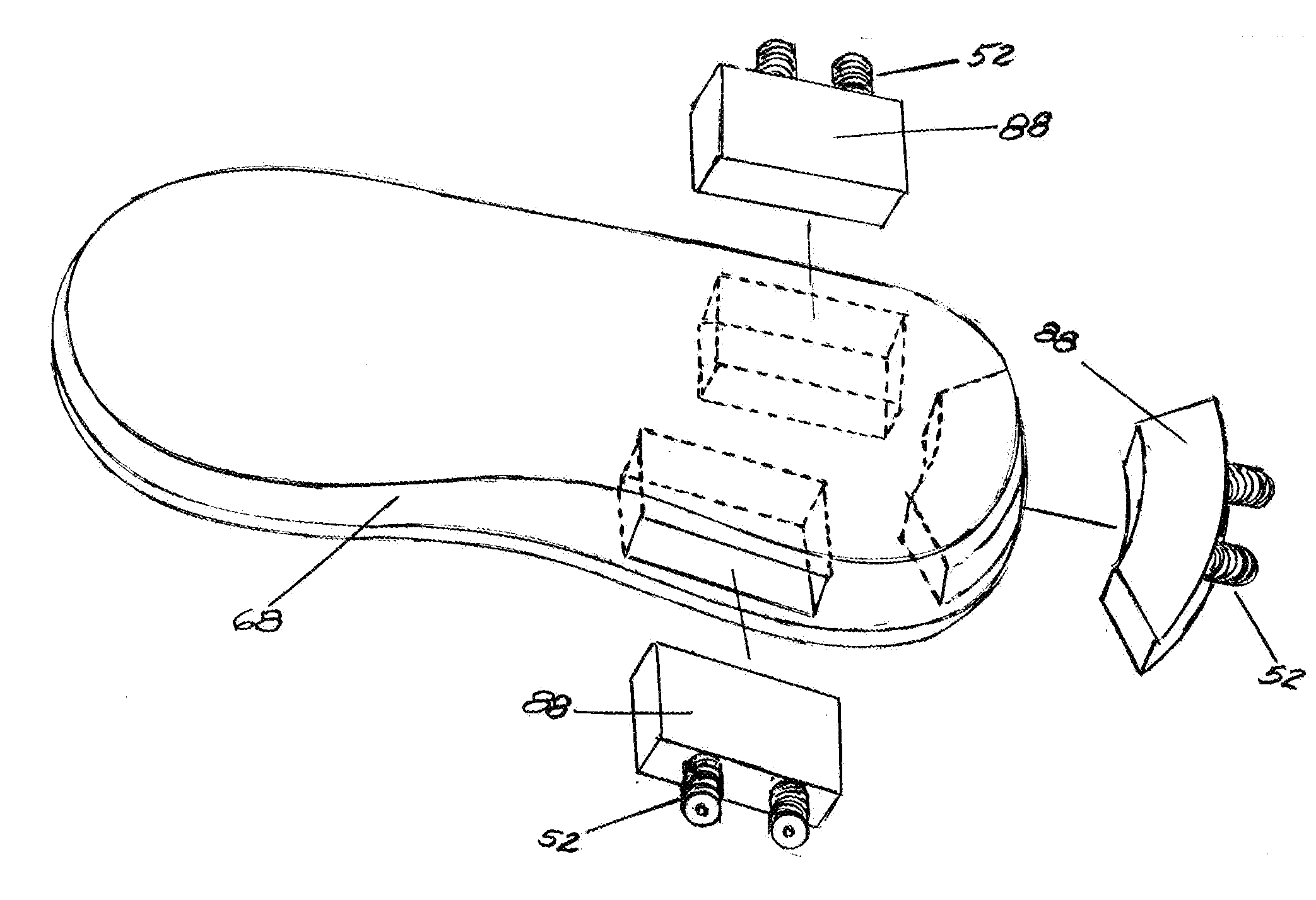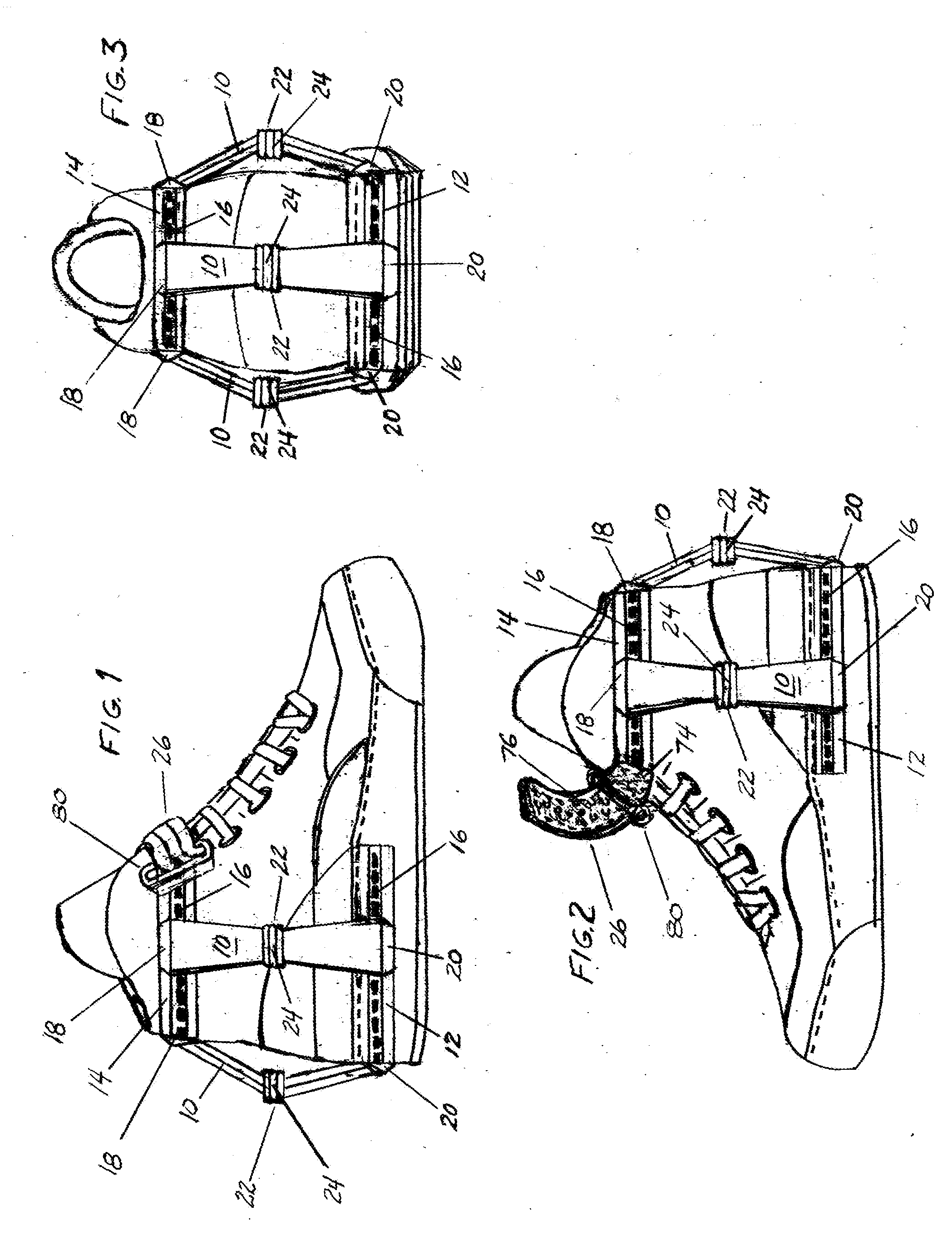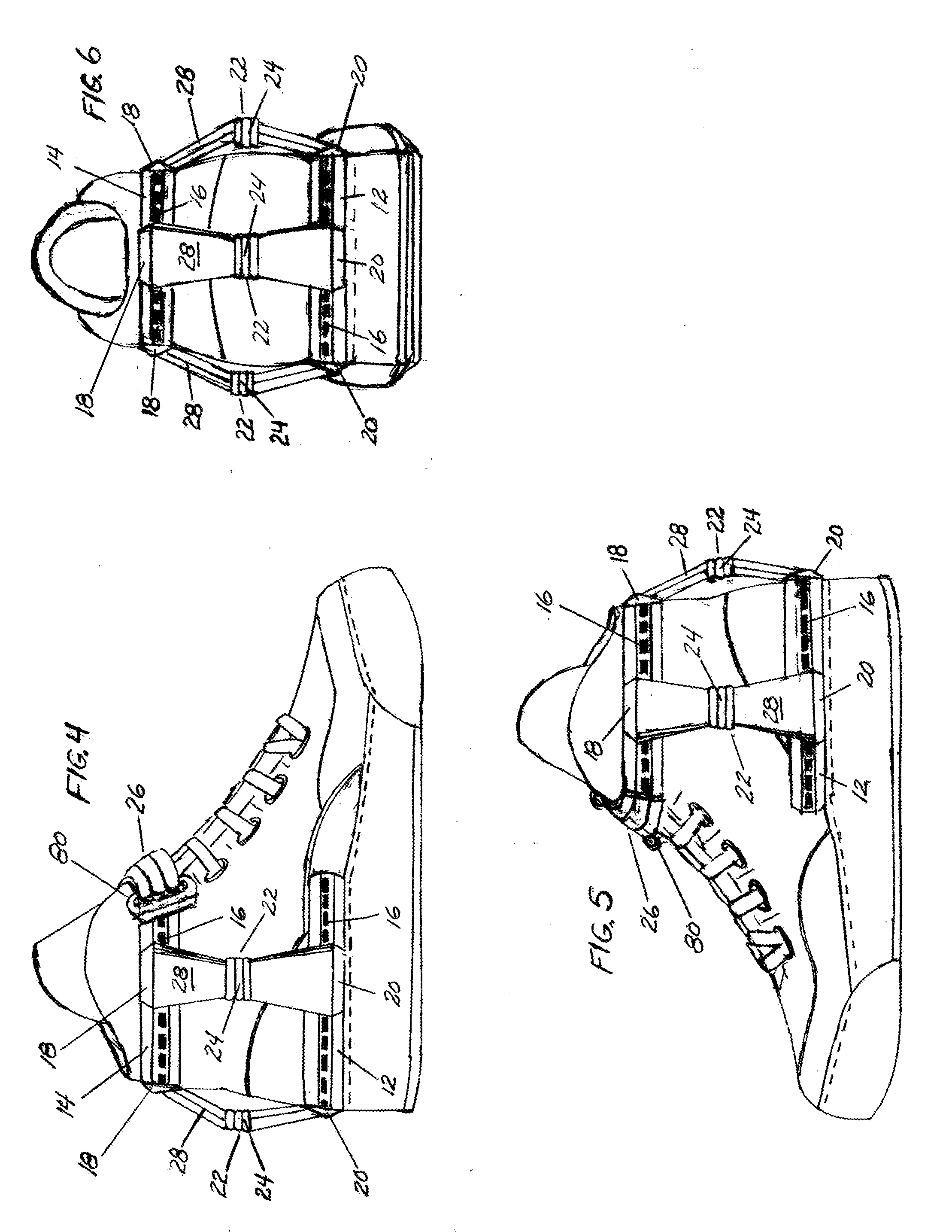In sports activities, however, the injuries can be more severe as athlete's feet are subjected to constant directional forces of
impact and stress.
Such injury often occurs in basketball when players are constantly running,
jumping, stopping, starting and
cutting and turning in different directions and excessive forces are exerted on the structures of the feet.
Athletic performance and efficiency is compromised when plagued by painful injuries that possibly can be averted through better support means to the athlete's feet.
Some cannot be placed inside a shoe.
And some devices replace the shoe for use in therapeutic applications and therefore cannot be used in rehab training while the athlete is participating in limited engagement of the
sports activity.
Wraps must be replaced often or re-wrapped due to slippage or loss of the adhesion causing the wrap to slip out of place as a result of the movement of a wearer's foot.
Unfortunately, straps also experience slippage, stretching, fraying and breakage and frequently have to be re-adjusted or replaced.
Tape wraps have also been used on the foot however these devices can
restrict blood flow to portions of the foot which may exacerbate the incidence of injury and affect the health and strength of the
Achilles tendon which already has limited
blood flow.
U.S. Pat. No. 5,672,156 Jimenez Ramos describes a device to avoid twists in ankles with a strap around the superior part of the ankle, pivotally joined to a removable rigid or semi-rigid sheet shaped or bent to accommodate the contours of the
ankle bone, with an end inserted in a little box but not attached there, the sheet does not allow bending when an excessive movement is committed.
Some of these prior art devices use parts which may unintendedly impair or impede other basic and complex movements of the foot and ankle and even lead to stress related injury, such as devices flexible in a single plane only, when the human foot must move naturally on multiple planes and in multiple directions.
For example, a device with a flexible rod or spring extending from the heel to
forefoot, to assist and provide stability when
jumping may actually impair or impede a natural running motion in the dorsi and
plantar flexion sagittal plane, because of the additional resistance caused by the rod or spring that could slow down the wearer while engaging in sport or even result in overcompensation and stress related injury to small bones in the foot such as the
fifth metatarsal bone.
Also the use of an rigid sheet or brace that does not allow bending when an excessive movement is committed becomes counter-productive to providing precision support complimentary to the complex bony structure of the foot as it is engaged in movement in sports activities.
Therefore, many of the inventions of the prior art are cumbersome in use and contemplate solving one support related problem but ignore several limitations or impediments inherently caused by the devices.
Many of the prior art inventions also utilize parts that can easily become worn or compromised such as hinges or strap materials or elastic materials that may permanently become stretched, fabric pockets housing rigid plates or parts that can be prone to wear and become unattached during the wearer's activities, or parts like a pivotally attached, unbendable sheet with an end inserted into a little box but not attached there which may become worn by frictional engagement and movement of the two parts or become entirely displaced with a sudden movement or counter force and could result in
tripping or potentially, a serious injury.
Several prior art inventions describe braces such as finger-like elements attached directly to the upper by various means or are attached only on one end, leading to the potential of the part causing wear on the upper and eventually even having the potential to pierce the upper and impale the wearer's foot.
Other support devices of the prior art require constantly re-adjusting or engaging multiple straps by use of buckles or hook and loop type fasteners which may become unfastened, and as such, are not only inconvenient and may be unsuited for certain types of competitive sporting game activities such as basketball.
The devices of the prior art, while providing some support means, are limited in versatility and both the function and direction of the support provided by the device.
Also, many of the devices of the prior art utilize the cinching of a strap to create tension, only to create a limited buttressing effect similar to the attachment of strips or Y shaped spring portions attached to or bonded on the lateral or medial sides, joining together in a single piece and surrounding the posterior side of the heel, similar to a
heel counter.
Further, the cinching motion of adjusting straps exerts force in the same direction in which the strap is pulled and therefore affords limited counter resistance and in some cases tends to pull away from the attachment point or
crimp the upper rather than to apply directional support at the attachment point.
The prior art devices also cannot be easily adjusted along the horizontal plane of the foot or to precise positions to impart direct support on the medial, lateral, and posterior sides.
Also, the prior art devices lack the precise multi-directional support or capability to provide tandem support in multiple planes and multiple directions.
 Login to View More
Login to View More 


